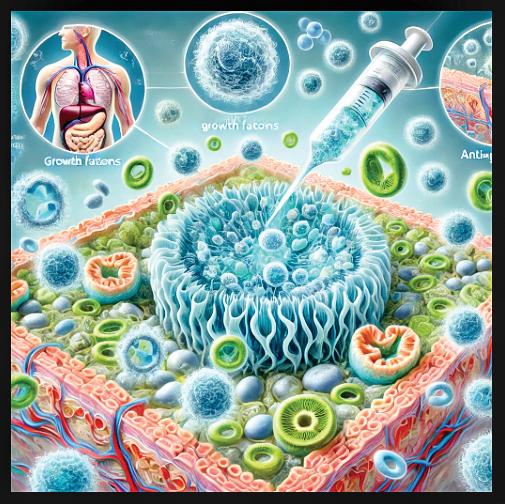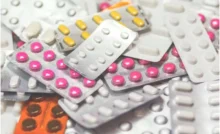Exosome therapy is making significant strides in regenerative medicine, offering a revolutionary approach with the potential to transform treatments for previously untreatable conditions. Exosomes are tiny extracellular vesicles, ranging from 30 to 150 nanometers in diameter, released by cells into bodily fluids such as blood, urine, saliva, and breast milk. These vesicles are crucial for intercellular communication, transporting proteins, lipids, and genetic material between cells, thereby influencing essential cellular processes like inflammation, growth, and repair.
The remarkable potential of exosomes stems from their ability to facilitate natural cellular communication. They carry molecular signals that can regulate cellular behavior, making them an attractive candidate for therapeutic applications. In regenerative medicine, exosomes are harnessed to support tissue repair and healing. By extracting exosomes from specific cells, such as stem cells, and introducing them into a patient’s body, researchers aim to stimulate healing and regeneration in damaged tissues. This approach provides a targeted alternative to traditional treatments, addressing the underlying cellular dysfunction rather than merely treating symptoms.
Application in Orthopedics
Exosome therapy is demonstrating promising results across various medical fields. In orthopedics, exosomes derived from mesenchymal stem cells (MSCs) have shown potential in repairing bone and cartilage. Research indicates that these exosomes can stimulate the formation of osteoblasts and chondrocytes, essential for bone and cartilage regeneration. This breakthrough is paving the way for new treatments for conditions like osteoarthritis, bone fractures, and cartilage injuries.
Cardiovascular Applications
In cardiology, exosome therapy is being explored for its ability to repair heart tissue following myocardial infarction, or heart attack. Exosomes from cardiac stem cells have shown promise in reducing cell death and promoting myocardial regeneration. Preliminary clinical trials suggest that this therapy may enhance cardiac function and improve outcomes for patients with heart disease.
Potential in Neurodegenerative Diseases
Neurodegenerative diseases, such as Alzheimer’s and Parkinson’s, pose significant challenges due to the progressive loss of neurons and impaired cellular communication. Exosomes offer a unique advantage in this context as they can cross the blood-brain barrier, a major obstacle for many treatments. By delivering therapeutic molecules directly to damaged neurons, exosomes hold the potential for slowing disease progression and improving cognitive function. Ongoing research is focused on engineering exosomes to carry neuroprotective agents or genetic materials targeted at affected neurons.
Challenges and Considerations
Despite the exciting advancements, exosome therapy faces several challenges. Standardizing exosome production to ensure consistent therapeutic properties is crucial for clinical application. Researchers are also working to fully understand the mechanisms through which exosomes exert their effects and to identify the most effective delivery methods. Addressing these challenges is essential for translating exosome therapy from research into routine clinical practice.
Future Directions
The future of exosome therapy looks promising, with researchers exploring the integration of this therapy with other regenerative techniques, such as gene therapy and tissue engineering. Combining these approaches could further enhance therapeutic outcomes and expand the range of conditions that can be treated. Additionally, exosomes are emerging as valuable tools for drug delivery. Their ability to bypass the immune system and deliver therapeutic agents precisely to target cells makes them ideal for improving drug concentration, absorption, and release duration.
Conclusion
Exosomes also show potential for immune modulation. By regulating immune responses, they could provide new treatment options for autoimmune diseases and prevent organ transplant rejection. Furthermore, exosome therapy is making inroads in dermatology, where it is used to promote skin regeneration, accelerate wound healing, and address cosmetic concerns such as aging and skin elasticity.
As clinical trials advance and researchers continue to refine exosome therapy, its full capabilities are expected to be realized. This therapy represents a groundbreaking advancement in regenerative medicine, offering new hope for treating a broad spectrum of medical conditions. With ongoing research and technological progress, exosome therapy may well shape the future of regenerative medicine, providing innovative solutions and improved outcomes for patients worldwide.
Asawari Bapat is a MBBS, D.P.B (Clinical Path), PGDHHM, CABP(H) (USA), D.A.B.R.M (USA), F.A.B.R.M (USA). Chief Scientific Officer, Orthobiologix Biotech Pvt. Ltd.
Sharmila Tulpule is a MBBS, M.S.(Ortho), M.ch(Ortho), – D.A.B.R.M (USA), F.A.B.R.M (USA). Founder Orthobiologix Biotech Pvt. Ltd.



